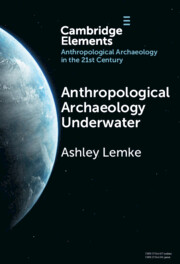Element contents
Anthropological Archaeology Underwater
Published online by Cambridge University Press: 30 May 2024
Summary
Keywords
- Type
- Element
- Information
- Online ISBN: 9781009327367Publisher: Cambridge University PressPrint publication: 31 October 2024
References
- 3
- Cited by

